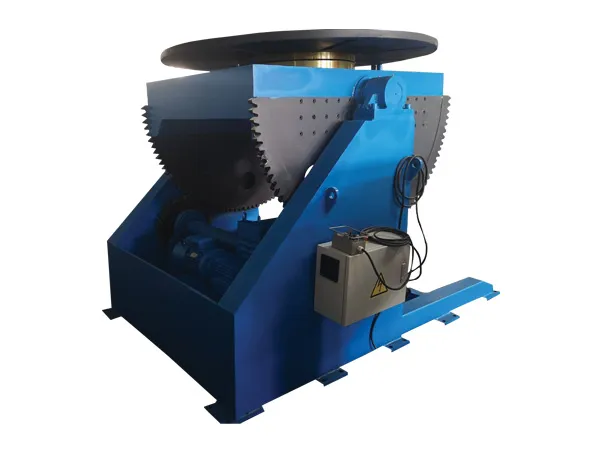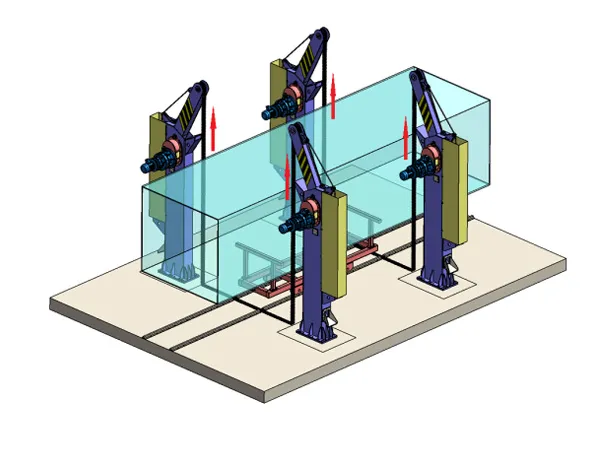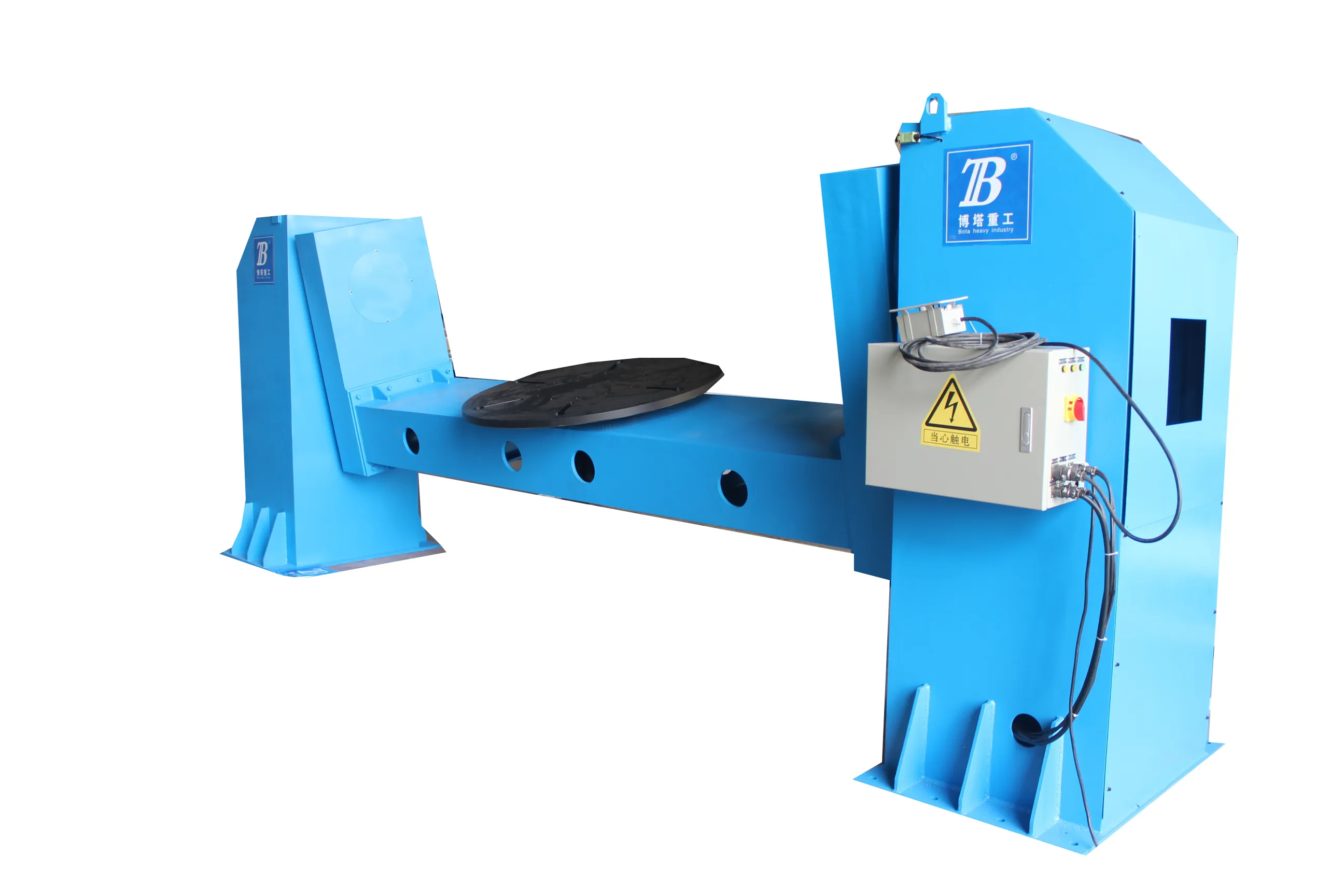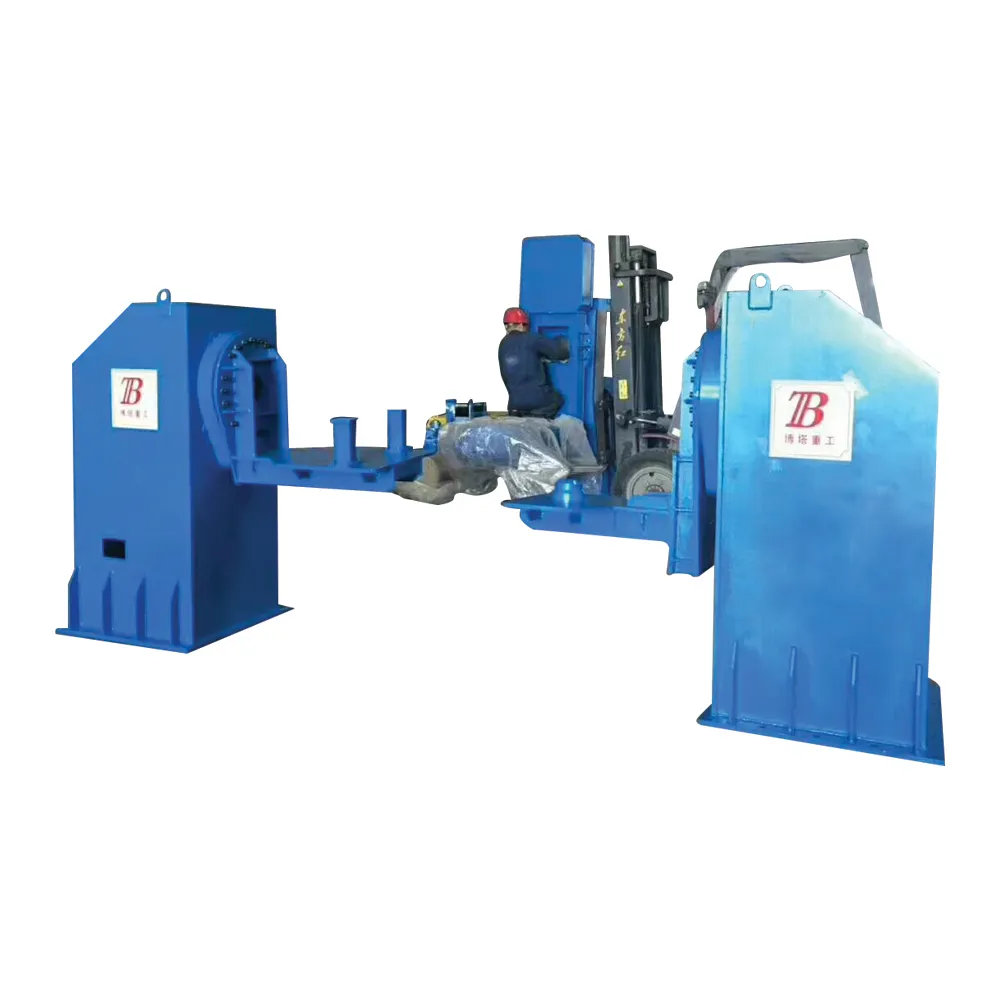This guide provides a general overview of maintenance procedures for welding rotators. Specific maintenance requirements will vary depending on the manufacturer, model, and operating environment. Always consult the manufacturer's manual for detailed instructions and safety precautions.

Lockout/Tagout: Before performing any maintenance, completely disconnect the power supply to the rotator and implement lockout/tagout procedures to prevent accidental startup.
Personal Protective Equipment (PPE): Wear appropriate PPE, including safety glasses, gloves, steel-toed boots, and hearing protection.
Qualified Personnel: Maintenance should only be performed by qualified and trained personnel.
Inspect for Damage: Visually inspect the rotator for any signs of damage, wear, or leaks before starting any maintenance.
Understand the Equipment: Familiarize yourself with the rotator's components and operating procedures before attempting any maintenance.
Safe Lifting Practices: Use proper lifting techniques and equipment when handling heavy components.
Adequate Ventilation: Ensure adequate ventilation if working with solvents or lubricants.
A regular preventative maintenance schedule is crucial for extending the life of your welding rotator and preventing costly downtime. Here's a sample schedule, but tailor it to your specific needs and manufacturer recommendations:
A. Daily/Shift Checks:
Visual Inspection:
Check for loose bolts, nuts, or fasteners.
Inspect rollers and wheels for wear, damage, or debris.
Examine cables, hoses, and wiring for cuts, abrasions, or kinks.
Look for oil leaks or excessive grease buildup.
Verify proper operation of safety features like emergency stop buttons.
Operational Check:
Listen for unusual noises during operation (grinding, squealing, etc.).
Ensure smooth and consistent rotation speed.
Verify proper tracking of the workpiece.
Check for excessive vibration.
B. Weekly Checks:
Cleanliness:
Clean the rotator and surrounding area of welding spatter, debris, and grease.
Wipe down rollers and wheels.
Lubrication:
Lubricate grease fittings as recommended by the manufacturer. Use the correct type of grease.
Roller Adjustment:
Check the alignment and pressure of the rollers to ensure proper contact with the workpiece. Adjust as needed.
Speed Control:
Verify the accuracy of the speed control. Calibrate if necessary.
C. Monthly Checks:
Electrical Connections:
Inspect electrical connections for tightness and corrosion.
Check the condition of wiring and insulation.
Gearbox:
Check the oil level in the gearbox (if applicable). Top off or change oil as recommended.
Listen for unusual noises coming from the gearbox.
Motor:
Inspect the motor for overheating or unusual noises.
Check the motor brushes (if applicable) for wear.
Drive System:
Inspect chains, belts, or gears for wear, tension, and alignment. Adjust or replace as needed.
Safety Devices:
Test the functionality of all safety devices, including emergency stop buttons and overload protection.
D. Semi-Annual/Annual Checks:
Thorough Inspection:
Conduct a comprehensive inspection of all components, including the frame, rollers, drive system, gearbox, motor, and electrical system.
Overhaul/Replacement:
Replace worn or damaged components, such as rollers, bearings, seals, and wiring.
Consider overhauling the gearbox and motor.
Calibration:
Calibrate the rotator to ensure accurate speed control and workpiece positioning.
Load Testing:
Perform a load test to verify the rotator's capacity and stability.
Professional Inspection:
Consider having a qualified technician perform a professional inspection of the rotator.

| Problem | Possible Cause(s) | Solution(s) |
| Erratic Rotation | * Loose rollers * Worn or damaged rollers * Incorrect roller pressure * Contaminated rollers * Drive system issues (chain slippage, belt wear) | * Tighten rollers * Replace rollers * Adjust roller pressure * Clean rollers * Adjust chain tension, replace belts, inspect gears |
| No Rotation | * Power failure * Faulty motor * Faulty gearbox * Tripped circuit breaker * Emergency stop engaged * Broken wiring | * Check power supply * Test and repair/replace motor * Inspect and repair/replace gearbox * Reset circuit breaker * Release emergency stop * Inspect and repair wiring |
| Excessive Vibration | * Unbalanced workpiece * Worn or damaged rollers * Loose fasteners * Misalignment * Foundation instability | * Balance the workpiece * Replace rollers * Tighten fasteners * Realign components * Ensure a stable foundation |
| Overheating | * Overload * Insufficient lubrication * Faulty motor * Poor ventilation | * Reduce load * Lubricate components * Test and repair/replace motor * Improve ventilation |
| Oil Leaks | * Damaged seals * Loose fittings * Overfilled gearbox * Cracked housing | * Replace seals * Tighten fittings * Drain excess oil * Repair/replace housing |
| Speed Control Issues | * Faulty potentiometer * Damaged wiring * Faulty control board * Incorrect calibration | * Replace potentiometer * Inspect and repair wiring * Test and replace control board * Recalibrate speed control |

Rollers:
Clean regularly with a degreaser to remove welding spatter and debris.
Inspect for wear, cracks, or flat spots. Replace as needed.
Ensure proper alignment and pressure.
Lubricate bearings (if applicable).
Drive System (Chains, Belts, Gears):
Check chain tension or belt tension regularly. Adjust as needed.
Lubricate chains and gears with appropriate lubricants.
Inspect for wear, damage, or misalignment. Replace as needed.
Gearbox:
Check oil level regularly. Top off or change oil according to manufacturer recommendations.
Listen for unusual noises.
Inspect for leaks.
Replace seals as needed.
Motor:
Keep the motor clean and free of debris.
Inspect for overheating or unusual noises.
Check motor brushes (if applicable) for wear. Replace as needed.
Verify proper ventilation.
Electrical System:
Inspect wiring for damage, corrosion, or loose connections.
Check the integrity of insulation.
Test safety devices regularly.
Frame and Structure:
Inspect for cracks, bends, or corrosion.
Ensure all fasteners are tight.
Repair or replace damaged components.
Use the correct type of lubricant as specified by the manufacturer.
Apply lubricant to all grease fittings, bearings, chains, and gears as recommended.
Avoid over-lubrication, which can attract dirt and debris.
Wipe off excess lubricant.
Keep a detailed maintenance log, recording all inspections, repairs, and replacements.
Maintain a copy of the manufacturer's manual for reference.
Track the hours of operation of the rotator.
When the rotator is not in use, store it in a clean and dry environment.
Protect it from extreme temperatures and humidity.
Cover the rotator to prevent dust and debris from accumulating.

Dispose of used lubricants and replaced components in accordance with local regulations.
Important Considerations:
Environmental Conditions: Adjust your maintenance schedule based on the operating environment. Dirty, dusty, or high-heat environments will require more frequent maintenance.
Duty Cycle: The more frequently the rotator is used, the more often it will require maintenance.
Specific Manufacturer Recommendations: Always prioritize the manufacturer's recommendations over generic guidelines. They are the experts on their equipment.
Spare Parts Inventory: Keep a supply of commonly needed spare parts on hand to minimize downtime.
By following these guidelines, you can ensure the safe and reliable operation of your welding rotator for years to come. Remember, prevention is always better (and often cheaper) than cure.
No. 1 Intersection of Chuangye Avenue and Weilai Avenue,
Yiyang County,Luoyang City, Henan Province, China
+86 400-0379-069
Copyright © 2023 An Automated Welding and Cutting Equipment Manufacturer Focusing on Welding Column Boom and Welding Rotator | All Rights Reserved Technical support: ShangXian